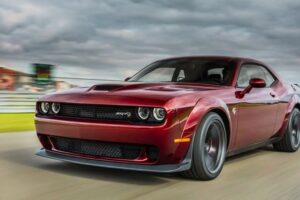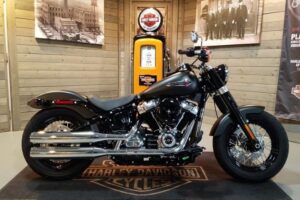Crew cabs typically have backseat passenger seating on either side of the vehicle, while extended cabs typically only have seating behind the driver’s seat. The crew cab also offers more space in the back seat, which is ideal for families.
The difference between a crew cab and an extended cab is that a crew cab has four doors, and an extended cab has two. The two main differences are the number of doors and the location of the rear passenger seats.
Read on to learn more about a crew cab vs. an extended cab and what makes them different.
Crew Cab Vs. Extended Cab
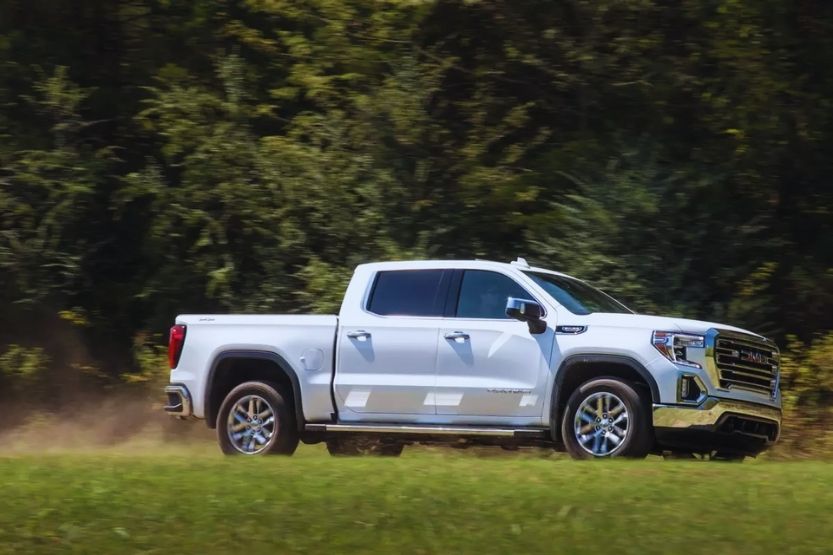
What Is An Extended Cab?
More Space Than Standard Pickup Trucks
An extended cab is an area of a truck behind the cab, usually with more space than standard pickup trucks.
Extended cabs are often seen on crew-cab trucks, with four doors, two on each side of the truck. The vehicle has more space in the back for passengers, cargo, or both than regular pickup trucks.
Benches or Individual Seats for Back Seats
The back seats can be either benches or individual seats, and they can be folded down to make room for cargo in the back of the truck. Extended cabs can also include a third row of seating behind the two benches or individual seats.
Use for Moving Large Items
Since extended cabs have extra space, they are used for people who need to move larger items around in their vehicles.
This includes businesses that need to transport boxes or furniture from one place to another or families with children who need more room in the back seat for entertainment when traveling long distances.
What Is A Crew Cab?
Pickup Truck With Four Doors
The crew cab is a type of pickup truck that features four doors. The crew cab became popular in the 1990s with the trucks made by General Motors.
Its name was coined to make it sound like a car – a crew cab is similar to a four-door sedan like a Camry, but it’s larger and carries cargo rather than passengers.
Larger and Heavier Than a Standard Cab Truck
A crew cab pickup truck is typically larger and heavier than a standard cab truck. The extra weight in the vehicle’s back can also reduce cargo space.
Easy Access to Back Seat
The extra doors on a crew cab truck are helpful for various reasons. Typically, the rear door on a crew cab truck is used to access the back seat and provides easy access.
This is especially useful when the back seat has been folded down, and you need to get something from the vehicle’s back while it’s still in gear.
Again, crew cab vs. extended cab – what’s the difference? Crew cabs are longer and have six available seats. Meanwhile, extended cabs have two rows of seats with three seats each. The latter can have back doors.
Difference Between a Crew Cab and an Extended Cab
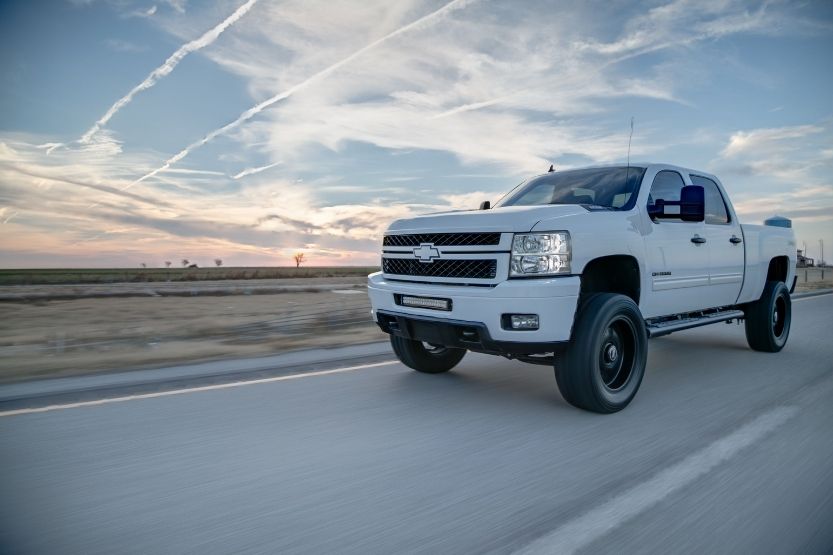
Extended Cabs and Crew Cabs differ in the number of seats, meaning one has more than the other. A Crew Cab will have a passenger seat in the middle and a bench on either side, whereas an Extended Cab will have a bench on either side.
A Crew Cab has a little more space for cargo, but an Extended Cab is still a practical truck for hauling things. Here are some of the significant differences between the two:
1. Capacity
Size of Truck Bed
The Extended Cab and Crew Cab are two different types of pickup trucks, but what is the difference between them? The truck bed size is the most apparent difference between a crew cab and an extended cab. Extended Cabs can have a bed 5-6 feet long, while Crew Cabs have a bed eight feet long.
Extended Cab Has a Shorter Wheelbase
The Extended Cab has a shorter wheelbase and is lighter than a Crew Cab, making it more fuel-efficient. The longer wheelbase on a Crew Cab makes it more stable on highways and can carry more weight. A Crew Cab can have seating for up to six passengers.
2. Size
The crew cab and extended cab differ in size, with the extended cab being larger than the crew cab. The extended cab is the most common size among pickup trucks and has a back seat.
The extended cab’s back seat can seat three people, but you can fold it down. The crew cab has a rear seat that only accommodates two people.
3. Doors
Carrying a construction crew to a job site in an Extended Cab is easier than a Crew Cab. It’s much easier to navigate and park when just one person is in the car. Extended Cabs can be an excellent option for those who need more than just a driver and one passenger.
A Crew Cab is roomier and can hold up to five passengers. This can be a great feature for families with multiple children. It’s also a good option for carrying more people than just the driver and one passenger.
4. Bed Options
When looking for the perfect truck to suit your needs, it is essential to consider what bed is available. Extended cabs have a few more options with a 6.5-footbed and a 5-foot bed, while crew cabs have a 5-foot bed and a 4.5-footbed. A crew cab is a way to go if you want the most options.
Type of Bed
Next, you should consider what type of bed you want. You can choose from a standard bed or one with a spray-on liner. A spray-on liner is perfect for those who haul wet materials to prevent leaks.
It also makes cleaning up easier. A standard bed would be fine for your needs if you only haul dry materials.
Bed Size
Finally, you should consider the best bed size for your needs. The most common sizes are 6.5 feet and 5 feet, but others are available on some models, such as 8 feet and 8 feet with rails.
The truck’s size will dictate what type of furniture and other items fit in it, so make sure you know this before making your purchase, so you don’t have to return it or order a different one later.
5. Cost
Extended and crew cabs may seem the same to you, but they are different. At first glance, it may seem that both would get you from point A to point B, but there are a few differences.
The main difference is the difference in space. Crew cabs have more room than extended cabs, can seat up to six people, and have a bed in the back.
Fuel and Insurance Costs
Extended cab trucks seat five people and usually do not have a bed in the back. Another difference is that extended cabs typically cost less to purchase at purchase time, but the truck will cost more at the time of lease due to fuel and insurance costs.
It’s good to be aware of these differences when purchasing or leasing your next truck.
6. Overall Ability
Extended Cabs Provide More Space for People and Cargo
You need a truck to do the job when you need to haul cargo and people. Extended cabs are designed for just that purpose.
They offer more space for people and cargo than a regular cab truck. Meanwhile, an extended cab is your best option if you regularly haul passengers or cargo.
A Regular Cab for Hauling Smaller Loads
For some people, extended cabs are not the best option. If you frequently haul smaller loads or don’t regularly carry passengers, an extended cab may not be an excellent idea for what you need in a truck.
Trucks with extended cabs have many advantages over regular cab trucks. The most obvious benefit is the extra space afforded by an extended cab’s seating and bed areas.
You will never have to worry about not having enough room to transport your goods when your load needs to be hauled by a truck with an extended cab.
Transport Goods Across the Country
Crew cabs are large trucks used to transport goods across the country. These trucks often move products for big-box stores, which carry large loads. The size of these trucks means they can be challenging to maneuver and often require assistance from other drivers.
The crew cab is not the only type of truck available, but it offers many benefits for those who use them for their job.
The main benefit of crew cabs is space. They provide more room than other trucks and allow drivers to move around more easily. Another good thing about these trucks is that they offer much more protection if there is an accident or bad weather.
Crew Cab’s Downsides
Unfortunately, the downsides to the crew cab include high fuel consumption and price tags. Due to their size, they are harder to park and may not fit in some parking spaces.
Summary of Differences Between Crew Cabs and Extended Cabs
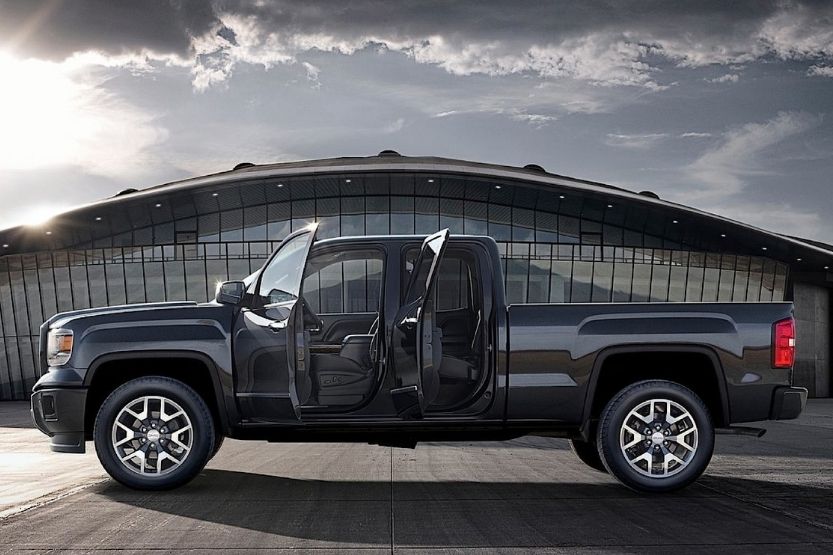
Extended Cab Provides an Additional Row of Seating for Riders
A common point of contention for many people is seating arrangements in cabs. Today, most cabs are smaller and have fewer seats.
The advantage of the extended cab is that it provides an additional row of seating for riders, which can be a godsend when traveling with a large group or family. This is an advantage not enjoyed by the crew cab.
Crew Cabs Are Shorter
The advantages of crew cabs are the space they offer for both the driver and passengers and their roomy cargo space. They are typically shorter than standard cabs, so they are less a risk of getting stuck in tight parking spots.
They also have a higher fuel consumption rate than standard cabs, offset by the amount of travel they can achieve per gallon.
Extended Cabs Vs. Crew Cabs Safety Concerns
Extended Cabs’ Size and Maneuverability
The most frequently cited safety issues surrounding extended cabs are their size and maneuverability, including blind spots that make it difficult for drivers to see behind them.
Although these concerns may be valid, they can be alleviated by following common-sense driving rules and caution when making turns and backing up. These same concerns also apply to standard cabs; they’re less of an issue because they have fewer seats.
Crew-cab Trucks Do Not Have a Traditional Front Windshield Pillar
The most common type of truck on the roads in America is a crew-cab truck. This truck has two or four doors and typically seats five people or more.
One concern with crew-cab trucks is that they do not have a traditional front windshield pillar that helps protect occupants’ heads from hitting the windshield during a crash.
In addition, because there are no pillars, there are blind spots that exist on both sides of the vehicle. This can make it difficult for drivers to see pedestrians or cars coming from the side while turning at intersections or changing lanes on highways.
Conclusion – Crew Cab Vs. Extended Cab
Crew and extended cabs are the two primary options for newer pickup trucks. The difference between them is that crew cabs have four doors, and extended cabs have three.
Extended cabs offer more cargo space, but crew cabs provide more passenger space. It’s a personal preference which one you choose.

